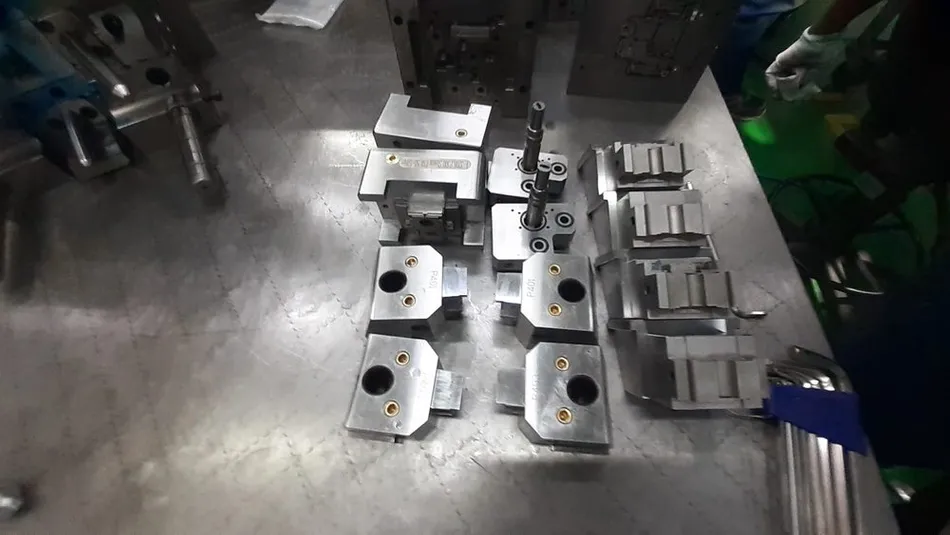Overmolding is a versatile and innovative manufacturing process that has revolutionized the production of complex, multi-material components. By allowing the combination of different materials into a single, cohesive unit, overmolding opens up new possibilities in design, functionality, and aesthetics. This process is particularly popular in industries such as automotive, consumer electronics, medical devices, and more. In this article, we’ll explore the intricacies of overmolding, its applications, benefits, and the technology behind it.
What is Overmolding?
Overmolding is a two-step process where a base material, known as the substrate, is partially or fully covered with a second material. This second material is typically a plastic or rubber that is molded over the substrate to create a single, unified component. The overmolding process is usually performed using injection molding, where the substrate is placed into a mold, and the overmold material is injected around it.
There are two primary types of overmolding:
- Insert Molding: In this method, the substrate is a pre-formed part, such as metal, that is placed into a mold, and then the overmold material is injected around it. This technique is commonly used for manufacturing components like electrical connectors and switches, where metal and plastic must be combined.
- Multiple Material Molding: In this process, multiple plastic materials are used to create a part with different characteristics in different areas. For example, a toothbrush handle might have a rigid plastic core with a soft, rubber-like grip area.
Applications of Overmolding
Overmolding is utilized in a wide range of industries due to its ability to combine different materials into a single, functional part. Some common applications include:
- Automotive Components: Overmolding is used to create parts with improved grip, such as gear knobs and steering wheels. It also helps in producing parts that require both rigidity and flexibility, like seals and gaskets.
- Consumer Electronics: Many electronic devices, such as smartphones and laptops, use overmolding to create durable and aesthetically pleasing cases, buttons, and connectors.
- Medical Devices: Overmolding is essential in producing medical devices that require a combination of rigid and soft materials, such as syringes, grips, and ergonomic handles.
- Power Tools: Handles and grips of power tools are often overmolded to provide a non-slip, comfortable surface while maintaining the strength and durability of the tool.
Benefits of Overmolding
Overmolding offers several advantages that make it a preferred choice in manufacturing:
- Enhanced Functionality: By combining different materials, overmolding allows manufacturers to create parts with specific characteristics, such as improved grip, shock absorption, and insulation. This enhances the overall functionality of the final product.
- Improved Aesthetics: Overmolding enables the production of visually appealing products with a seamless integration of different colors and textures. This is particularly important in consumer goods, where design and appearance play a crucial role.
- Cost Efficiency: Overmolding can reduce assembly costs by eliminating the need for additional components and assembly steps. By creating a single, integrated part, manufacturers can streamline production processes and reduce labor costs.
- Durability: The overmolding process creates a strong bond between the substrate and the overmold material, resulting in a durable, long-lasting product. This is especially important in applications where the product is subjected to wear and tear.
Overmolding Process and Materials
The overmolding process involves several critical steps:
- Design: The design phase is crucial for ensuring that the substrate and overmold materials are compatible and will bond effectively. Engineers must also consider the mold design, material flow, and cooling requirements.
- Mold Creation: A custom mold is created based on the design specifications. The mold must be precise to ensure that the materials bond correctly and that the final product meets quality standards.
- Material Selection: Choosing the right materials is essential for a successful overmolding process. Common substrate materials include metals, plastics, and ceramics, while the overmold material is typically a thermoplastic elastomer (TPE), silicone, or another plastic.
- Injection Molding: The substrate is placed into the mold, and the overmold material is injected around it. The material flows into the mold, filling the cavities and creating a bond with the substrate.
- Cooling and Ejection: After the overmold material has been injected, the part is cooled and ejected from the mold. The cooling process is critical for ensuring that the materials bond properly and that the part maintains its shape.
Conclusion
Overmolding is a powerful manufacturing process that offers numerous benefits, from enhanced functionality and aesthetics to cost efficiency and durability. As technology continues to advance, the applications and possibilities of overmolding will only expand, making it an essential tool for industries seeking to create innovative, high-quality products. Whether you’re in the automotive, medical, or consumer electronics industry, overmolding is a technique worth exploring for your next project.





